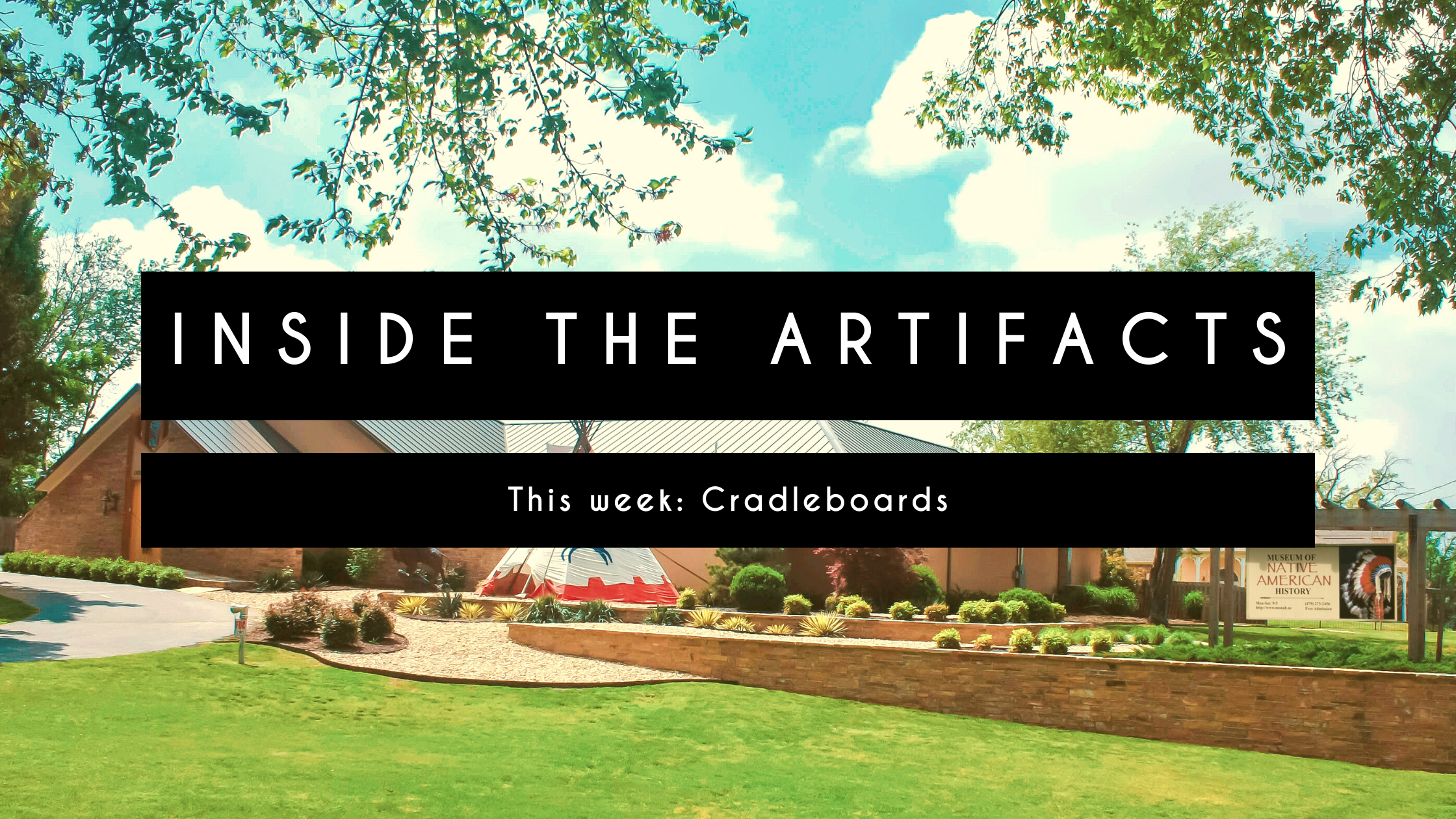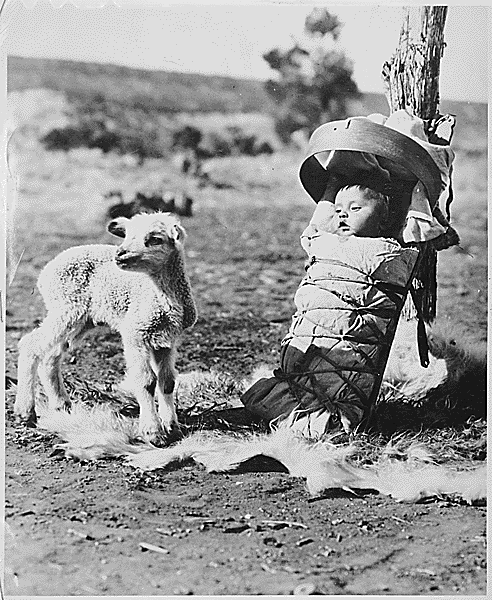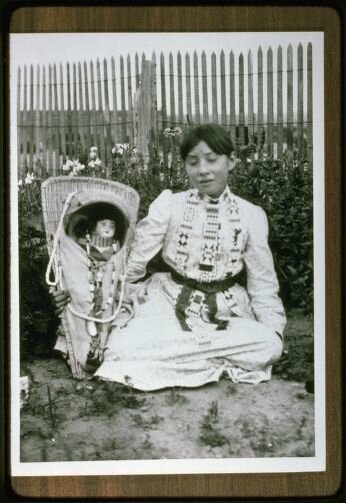Cradleboards
Many tribes all across North America have used, and some still continue using, cradleboards to carry their children at very young ages. Here at The Museum of Native American History, we have two great examples of cradleboards reaching from sea to shining sea. To the right pictures a Mohawk cradleboard, with intricate wood carvings and beautiful paintings, dating to the late 1800s. On the left, we can see a Paiute cradleboard dating to around the same time, wrapped in leather with beautiful embroidery and beadwork. While different, they offer the same amount of comfort and protection to a newborn child while giving their mother a range of motion to carry on with her day.
You may best recognize cradleboards from the famous story of Sacagawea, who carried her newborn son along the expedition with Lewis and Clark. She faced the many dangers on the journey with grace, all with a child strapped to her back! Cradleboards are common among many tribes traditionally. They were usually made from wood as the baseboard, then leather, cloth, and lacing usually strapped the child in place to the board. Looking at the Mohawk example, we see only the backboard, with bundles of cloth to the side in the photograph. The piece of wood lying horizontally at the top is there to protect the child’s head if it were to fall over. If you scroll down, there is a photograph of a Navajo baby that shows how this works a little better. Now, if we look at the Paiute example, we see something almost entirely different! Instead of a wood-carved backboard and leather wrappings, the cradleboard is covered in leather with two flaps in the front, laced up with a baby inside. The baby’s head would have been protected with the wicker visor with extravagantly decorated fringe, made with beads, bells, and shells.
These would have likely been decorated by the child’s family, a specialized artisan, or even passed down through generations. The decorations and adornments vary from tribe to tribe, representing a family lineage or tribe; the objects attached could also be purposed for practicality, ceremonial, or even as a distraction for the baby. All of these cradleboards are very practical. They keep the baby safe and comforted. Being tightly wrapped in a cradleboard is just like the modern idea of swaddling. They could be attached to the mother’s back, carried, propped up on the ground, or even attached to the side of a horse for long travel. Some tribes were nomadic, so it was essential to ensure a child’s safety on a long journey.
The older a child got, the less dependent they were on these boards. Older babies had their hands free to play when wrapped. As they became old enough to crawl, they didn’t need to be wrapped anymore unless for long traveling.
Some tribes still communally make or hand down cradleboards for their newborns even today. Many are used more as regalia than for practicality, but there is a renewed interest in the practice. Children and even skilled artisans continue the craft of making cradleboards for dolls as well, which is a long tradition. Here there is a photo of a young girl and her doll in its cradleboard from 1908! Cradleboards are an ancient, beautiful but practical craft!
Blog by Jazlyn Sanderson
References:
“Native American Cradleboards.” Native Languages of the Americas website. Accessed Dec. 30, 2020. http://www.native-languages.org/cradleboard.htm
Thomae, Dawn Scher, and Rebekah Ryan. “American Indian Cradles and Cradleboards.” Milwaukee Public Museum. Published in 2010. http://www.mpm.edu/research-collections/anthropology/online-collections-research/american-indian-cradles-and
Tracy. “The Native American Cradleboard, More Than Just a Baby Carrier.” Prairie Edge & Sioux Trading Post. Published June 14, 2011. https://prairieedge.com/tribe-scribe/the-native-american-cradleboard-more-than-just-a-baby-carrier/
Photo Credits:
Navajo papoose on a cradleboard with a lamb approaching, Window Rock, Arizona. Courtesy National Archives, photo no. 75-N-NAV-76. National Archives Identifier: 519160.
Paiute Indian Girl with Doll in Cradleboard, ca. 1908. Paradise Valley Folklife Project collection, 1978-1982 (AFC 1991/021), American Folklife Center, Library of Congress



